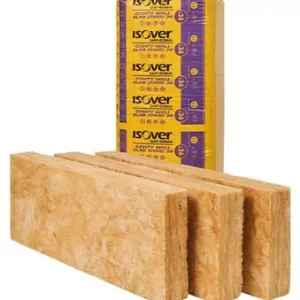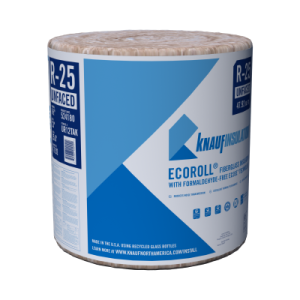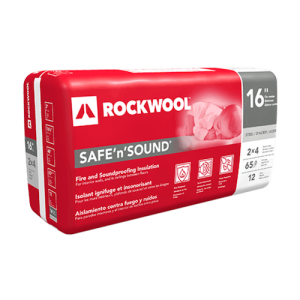Different Types of Soundproofing Materials in Rwanda

Welcome to the world of soundproofing! Whether you’re a musician looking to create your own personal oasis or a homeowner seeking some peace and quiet, understanding the different types of soundproofing materials can make all the difference. From acoustic panels to mass loaded vinyl, there are numerous options available to help you achieve that blissful silence you crave. So let’s dive in and explore these sound-blocking wonders that will revolutionize your space and transform it into a haven of tranquility. Say goodbye to noisy neighbors or unwanted distractions – with these soundproofing materials, serenity is just around the corner!
What is Soundproofing and Why is it Important?
We’ve all experienced those moments when unwanted noise disrupts our peace and concentration. Whether it’s the incessant honking of traffic outside, the blaring television next door, or even the sound of footsteps echoing through thin walls – it can be incredibly frustrating. That’s where soundproofing comes in.
Soundproofing is the process of reducing or eliminating unwanted noise from entering or escaping a room or space. It involves using specific materials and techniques to absorb, block, or dampen sound waves. By doing so, it helps create a more peaceful environment where you can focus on what matters most to you.
But why is soundproofing important? Well, aside from helping maintain your sanity by keeping external noises at bay, there are several other benefits to consider. For musicians and audio enthusiasts, proper soundproofing ensures that their talent and creativity aren’t hindered by outside disturbances. It allows them to fully immerse themselves in their craft without distractions.
For homeowners living in busy urban areas or near noisy neighbors, effective soundproofing creates a haven within their own four walls. It provides privacy and tranquility for relaxation after a long day at work or when spending quality time with loved ones.
Moreover, in commercial settings such as offices and conference rooms, proper acoustic control plays a vital role in enhancing productivity and communication among employees. By reducing background noise levels and echo effects caused by hard surfaces bouncing sounds around the room, employees can concentrate better during meetings and conversations.
In short (pun intended), soundproofing offers an array of benefits – from increased focus to improved privacy – making it an essential consideration for anyone seeking harmony amidst cacophony. So if you’re ready to reclaim your serenity and bid farewell to unwelcome noise intrusions…read on!
Acoustic Panels
Acoustic panels are a popular choice when it comes to soundproofing a space. These panels are specifically designed to absorb and reduce sound waves, making them an effective solution for minimizing noise transmission.
One of the key advantages of acoustic panels is their versatility. They can be installed on walls, ceilings, or even as freestanding partitions, allowing you to customize your soundproofing setup according to your specific needs. Whether you’re setting up a home recording studio or looking to create a quieter office environment, acoustic panels offer great flexibility.
In terms of design options, acoustic panels come in various shapes, sizes, and colors. This means that not only will they improve the acoustics of your space but also enhance its aesthetic appeal. You can choose from different fabric coverings and patterns to match your existing decor or make a bold statement with vibrant hues.
When it comes to installation, acoustic panels are relatively easy to set up. Most commonly, they can be attached directly onto walls using adhesive strips or mounted onto frames for added stability. Depending on the level of sound reduction required, strategic placement and spacing of these panels can significantly improve the overall effectiveness.
Acoustic panels provide an efficient way to control unwanted noise in any environment without compromising on style or functionality. By reducing echo and reverberation while maintaining visual appeal, these versatile soundproofing materials offer a practical solution for creating more peaceful spaces
Mass Loaded Vinyl (MLV)
Mass Loaded Vinyl (MLV) is a highly effective soundproofing material that can be used in various applications. It is typically made from a combination of vinyl and other heavy materials, such as barium sulfate or calcium carbonate, which gives it its mass and density.
One of the main advantages of MLV is its ability to block airborne noise. Its dense composition helps to absorb and dampen sound waves, preventing them from passing through walls, floors, or ceilings. This makes it an excellent choice for reducing noise transmission in homes, offices, recording studios, or any other space where sound insulation is needed.
MLV can also be easily installed due to its flexible nature. It can be cut into desired shapes and sizes to fit specific areas, making it versatile for different applications. Additionally, MLV can be applied directly onto existing surfaces or sandwiched between layers of drywall or other building materials.
Another benefit of MLV is that it does not require extensive construction work. Unlike some soundproofing methods that involve tearing down walls or ceilings, MLV can simply be added on top of existing structures without major modifications.
It’s worth noting that while MLV is highly effective at blocking airborne noise like voices or music, it may not provide as much impact on low-frequency sounds like heavy machinery vibrations. In these cases, additional measures may need to be taken alongside using MLV for optimal results.
In conclusion (not conclusive), Mass Loaded Vinyl (MLV) offers excellent soundproofing capabilities due to its high density and mass properties. It effectively blocks airborne noise and can be easily installed without the need for extensive construction work. However,it should be noted that while MLV works well against airborne noises like voices or music,it may not provide the same level of effectiveness against low-frequency sounds such as vibrations caused by machinery
Soundproof Insulation
Soundproof insulation is a highly effective solution for reducing noise transmission and creating a quieter environment in your home or office. It is designed to absorb sound waves and prevent them from passing through walls, floors, and ceilings.
One popular type of soundproof insulation is fiberglass batts. These are made from tightly woven glass fibers that trap air pockets, offering excellent sound absorption properties. They can be installed within wall cavities or between floor joists to help minimize the transfer of sound.
Another option is cellulose insulation, which is made from recycled materials such as newspapers and cardboard. It has great acoustic qualities and can be blown into wall cavities or attic spaces to create an additional barrier against noise.
For those looking for eco-friendly options, there are also natural wool or cotton insulation products available. These materials not only provide good sound absorption but also have the added benefit of being sustainable and non-toxic.
It’s important to note that while soundproof insulation can significantly reduce noise levels, it may not completely eliminate all sounds. Other factors like doors, windows, and gaps in construction should be considered for optimal results.
Soundproof insulation offers a practical solution for controlling noise pollution in both residential and commercial settings. Whether you’re dealing with loud neighbors, traffic noise or noisy appliances, investing in quality soundproofing materials can greatly enhance your living or working environment by creating peace and tranquility.
Acoustic Caulk and Sealants
Acoustic Caulk and Sealants are an essential component in soundproofing projects. These products play a crucial role in sealing gaps and cracks that can allow sound to leak through. They are specifically designed to create an airtight barrier, preventing noise from entering or exiting a space.
One of the key advantages of using acoustic caulk and sealants is their flexibility. They can be easily applied to various surfaces such as walls, ceilings, windows, or doors. The material adheres well to different materials like wood, metal, concrete, or drywall.
When it comes to effectiveness, acoustic caulk and sealants excel at reducing airborne noise transmission. By filling in gaps and cracks around windows or baseboards with these products, you can significantly minimize sound leakage.
Another benefit is that they are generally easy to apply. Most come in convenient squeeze tubes which make application hassle-free. Plus, they have low odor and quick drying time which makes them ideal for both residential and commercial applications.
It’s important to note that while acoustic caulks and sealants are effective at reducing airborne noise transmission, they may not provide significant reduction for impact noises such as footsteps or heavy machinery vibrations.
When used correctly alongside other soundproofing materials such as acoustic panels or insulation batts, acoustic caulks and sealants can greatly enhance the soundproofing capabilities of any space by sealing off potential sources of noise leaks
Sound Blocking Curtains
Sound Blocking Curtains
If you’re looking for an effective and versatile soundproofing solution, look no further than sound blocking curtains. These heavy-duty curtains are designed to absorb and dampen noise, making them perfect for use in bedrooms, home theaters, or any space where noise reduction is desired.
One of the key features of sound blocking curtains is their thickness and density. Made from multiple layers of fabric including dense foam or rubberized materials, these curtains effectively block out unwanted sounds by absorbing them instead of letting them pass through.
In addition to their soundproofing capabilities, these curtains also offer other benefits such as light control and thermal insulation. The thick layers help to block out sunlight and regulate room temperature, creating a more comfortable living environment.
Installing sound blocking curtains is relatively simple. They can be hung on a standard curtain rod just like regular drapes or blinds. Some models even come with additional attachments like Velcro strips or hooks for easy installation.
It’s important to note that while sound blocking curtains can significantly reduce noise levels, they may not provide complete silence in extremely loud environments. However, when used in conjunction with other soundproofing materials such as acoustic panels or insulation, they can greatly enhance the overall effectiveness of your soundproofing efforts.
So if you’re tired of being disturbed by external noises or want to create a more peaceful environment at home, consider investing in high-quality sound blocking curtains. With their ability to absorb noise and improve comfort levels in your space, they are definitely worth considering as part of your overall soundproofing strategy.





